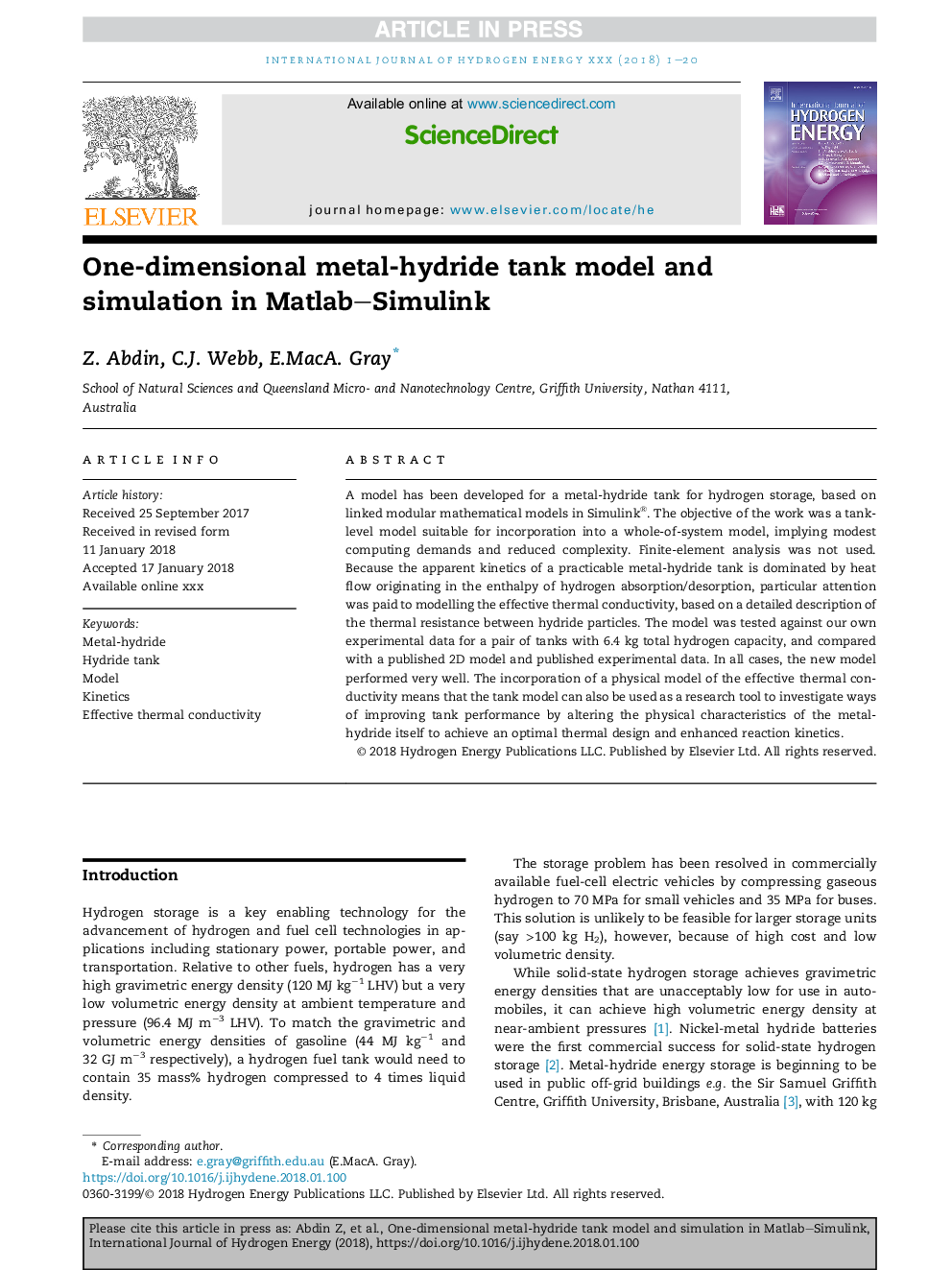| Article ID | Journal | Published Year | Pages | File Type |
|---|---|---|---|---|
| 7707278 | International Journal of Hydrogen Energy | 2018 | 20 Pages |
Abstract
A model has been developed for a metal-hydride tank for hydrogen storage, based on linked modular mathematical models in Simulink®. The objective of the work was a tank-level model suitable for incorporation into a whole-of-system model, implying modest computing demands and reduced complexity. Finite-element analysis was not used. Because the apparent kinetics of a practicable metal-hydride tank is dominated by heat flow originating in the enthalpy of hydrogen absorption/desorption, particular attention was paid to modelling the effective thermal conductivity, based on a detailed description of the thermal resistance between hydride particles. The model was tested against our own experimental data for a pair of tanks with 6.4Â kg total hydrogen capacity, and compared with a published 2D model and published experimental data. In all cases, the new model performed very well. The incorporation of a physical model of the effective thermal conductivity means that the tank model can also be used as a research tool to investigate ways of improving tank performance by altering the physical characteristics of the metal-hydride itself to achieve an optimal thermal design and enhanced reaction kinetics.
Related Topics
Physical Sciences and Engineering
Chemistry
Electrochemistry
Authors
Z. Abdin, C.J. Webb, E.MacA. Gray,
